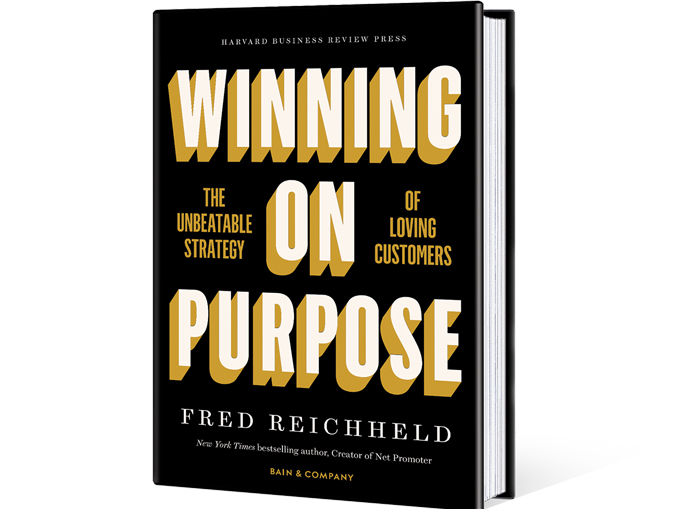Reviewed by Melanie B. Brewer, PhD, MS, Human Factors in Information Design, Santa Barbara Human Factors, Inc., Santa Barbara, California, melanie@sbhumanfactors.com
f you shop online and have a pulse, you’ve probably encountered the Net Promotor Score (NPS), that ubiquitous survey found on almost every website today. Winning on Purpose: The Unbeatable Strategy of Loving Customers is a new book on NPS by Fred Reicheld, who originated the metric earlier in his career at Bain Consulting, where he has worked for decades. In his book, Reicheld provides a much deeper understanding of this metric. His way of explaining the rationale and philosophy of NPS had me looking at it in a completely new way, not to mention feeling much more inspired by its potential.
As Reicheld explains, despite its widespread adoption, the Net Promotor Score has often been misunderstood and even misused. He explains why he regrets having so strongly positioned NPS as a predictor of financial performance in his earlier work, and worries that it has caused companies to use NPS in ways that were never intended, and frankly run counter to its true purpose. He uses a lot of the book to correct this error and explains that NPS should really be called the Net Promotor System—or even Net Purpose System—because it is an interlocking set of cultural, organizational, and operational practices aimed at elevating companies to be truly customer-centric.
In Winning on Purpose, Reicheld contrasts “bad companies,” which focus on maximizing short-term financial gains and often use NPS as a biased post hoc metric, with “good companies” that focus on building long-term customer loyalty. The former generate what he refers to as bad profits that are spawned by a host of customer-unfriendly practices aimed at squeezing every last dollar from customers via late fees, penalty fees, and generally poor customer service. In contrast, the “good companies” might leave dollars on the table, but their positive end-to-end experiences generate good profits and provide a solid basis for outstanding long-term, sustainable growth.
He backs up his arguments about good and bad companies and profits by showing that an index fund of public companies with the highest NPS scores tend to be good companies that have outperformed the market median dramatically. This, he feels, convincingly makes the case that by doing good, companies can also do very, very well. Warning: you may be inspired to immediately buy stock in the dozen or so companies that comprise his “F.R.E.D.S.I. Index.” Companies that follow the Foster Recommendation, Eliminate Detraction credo—running the gamut from Texas Roadhouse to Discover to Southwest Airlines—have annual returns that have exceeded 26 percent.
One interesting point he makes is that the most successful companies apply NPS from the inside out, using it to help employees engage more deeply with the mission of customer-centricity. Through multiple inspiring case studies of companies as diverse as Chik-Fil-A, Bain, and Apple, Reicheld explains how NPS can be applied as a management technique and as a means of continuous improvement and source of inspiration for creating moments of customer delight.
In terms of practical advice, Reicheld gives examples of how to properly deploy NPS, as well as what to avoid—including examples of poor NPS survey practices he has observed, such as a story of outrageously biased tactics used by one company to garner artificially high NPS scores used-car salesmen. He also advocates using something he terms the Earned Growth Rate as a sister metric to NPS. Earned Growth Rate is the revenue growth generated by existing customers and is more accurate than surveying for NPS.
Reicheld is an engaging writer, and his indefatigable passion for customer-centricity is so tangible that one can’t help but come away from the book inspired to do more for customers and for the employees who serve them. Far from being a hyperbolic statement in the title of this book, Reicheld truly does love customers. He won’t rest until you love them, too.




